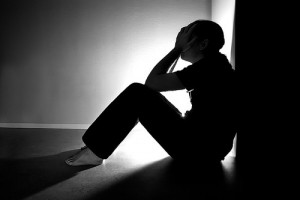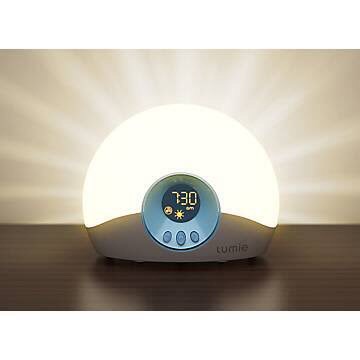
None of us is perfect, and honestly, more people than you would think struggle with serious disorders that affect their every day lives. Light therapy has been proven effective in a wide array of scenarios. A light box imitates outdoor light, which boosts energy levels and improves health, as well as multiple other perks.The process of using a light box and other forms of the therapy have been successfully treating all sorts of disorders. These conditions range from Seasonal Affective Disorder (SAD), to curing acne that just won’t go away…plus a little bit of everything in between. Now lets talk…why should you try light therapy?
1. Seasonal Affective Disorder and Depression…
If you struggle with any form of depression, light therapy may be a game changer for you. Seasonal Affective Disorder or SAD is a form of depression that usually strikes annually during fall and winter. For some people, symptoms for SAD occur during summer and spring, but it is rare. Symptoms for the disorder include irritability, trouble getting along with others, weight gain and major appetite changes, low energy levels, extreme sensitivity to rejection, oversleeping, and an achey, heavy feeling throughout the limbs.
For people with depression, aside from Seasonal Affective Disorder, light therapy can help by simply using a light box to bring their energy levels back to normal. Depression is usually apparent in conjunction with lack of sleep and Circadian Rhythm Disorders. Circadian Rhythm Disorders are changes in a person’s normal rhythm of their 24 hours cycles. When the patterns of the brain wave activity drastically change due to work, pregnancy, medications, time zone changes, routine swaps, and medical issues such as Alzheimer’s, it is hard for the brain to keep up. Making it is easy for depression to creep in. Light therapy can help bring your brain and energy levels back to a point that is difficult to reach without any assistance.
2. Mental Disorders Can See The Light…
More than three million people in the United States are diagnosed with Bipolar Disorder, also referred to as Manic Depression each year. The disorder brings about episodes of mood swings ranging from depressive lows to manic highs. Most people struggling with the disorder undergo periods of elevated moods, either high or low, and increased irritability. A reduced need for sleep, depression symptoms, and loss of interest in passions are all common occurrences.
Same as Bipolar Disorder, there are more than three millions US cases of Insomnia per year. Insomnia is usually self-diagnosable and the symptoms include difficulty falling asleep and remaining asleep. People that struggle with Insomnia are often overly tired, lack concentration, show signs of depression, are extremely irritable, and suffer from headaches.
Unfortunately, neither disorder can be cured, but light therapy has been proven to show signs of improvement. Light therapy helps keep the biological clock on time in people with Bipolar Disorder and Insomnia. This clock can be easily agitated and can throw off sleep and wake cycles which are known to stir up symptoms such as mania and depression. Using light therapy aids in regulating biological patterns, in turn reducing mood swings and major brain wave changes.
People who struggle with SAD, depression, and Bipolar Disorder, often face other mental disorders such as Bulimia and Anorexia. The therapy indirectly improves mood, thus reducing the need to binge or purge. Or in the case of Anorexia, people feel the need to consume more food than normal for them.
3. Psoriasis, Acne and Other Skin Disorders…
Light therapy is extremely effective for skin conditions such as Psoriasis, Vitiligo, Scleroderma, and many other disorders. The process works by decreasing cell growth and inflammation that create skin issues. Psoriasis and acne, both very common skin conditions, have both shown results when treated with light therapy processes. Do you struggle with any of these? Most of us do or have at some point.
Psoriasis occurs when skin cells build up and form itchy and scaly patches on your body. Using a light box in a scenario such as this would slow down your cell growth and bring this painful condition to a halt.
There are also forms of light therapy that can improve the cosmetic appearance of your skin, for issues such as acne. Acne, which appears in the form of pimples, blackheads, and bumps, arises when hair follicles plug with dead skin cells and oil. There are many different forms of light therapy to aid in getting rid of acne, and most have proven effective for the common issues of every day pimples or “zits.” Light processes work in this scenario by killing the bacteria in your skin from the inside out in less than fifteen minutes of treatment.
4. Say Goodbye To Pills…
Why take pills for your disorders when there may not be a need? Trying different forms of light therapy and seeing results may mean that you can cancel those prescriptions your doctor keeps filling. Antidepressants bring along a whole slew of side effects that are far from fun. These include nausea, weight gain, fatigue, drowsiness, insomnia, sexual problems, blurred vision, dry mouth, stomach issues such as constipation, and much more.
Also, either decreasing the amount of pills you take or just cutting them all together can be extremely beneficial if you are either pregnant or breastfeeding. Save that baby! Switching to a more natural form of medication, such as light therapy, will not only help you, but it will keep your baby healthy and safe.
5. Undergoing Study For Much Much More…
Light therapy is currently under the microscope for conditions such as Obsessive Compulsive Disorder (OCD), Premenstrual Syndrome, Parkinson’s Disease, Dementia, Attention Deficit/Hyperacticity Disorder (ADHD), jet lag, and more. If you find yourself struggling with any of these, light therapy may be the path you want to follow. Light therapy has not been proven to cure any of these conditions quite yet, but it’s only a matter of time.






















